Pope Francis has appointed 21 new cardinals – an expert on medieval Christianity explains what it means for the future of the Catholic Church
Published in News & Features
On Sept. 30, 2023, Pope Francis swore in 21 clergymen as new members of the College of Cardinals. The College is an important part of the church’s governance structure – each new member takes a formal oath during a ritual ceremony in the presence of present members of the College.
This assembly of cardinals, known as a consistory, is the ninth that Francis has held to create new cardinals since 2013, when he succeeded the retiring Pope Benedict XVI.
The new appointments will take the membership of the College from 221 to 242, including retirees. Francis has ensured that the College includes clergy from around the world and is representative of the diversity within Catholicism.
As a specialist in medieval Christianity, I have studied the complex history of the College of Cardinals. Shaped by past challenges, it is a crucial institution – for its members will elect the next pope and help develop the policies the Catholic Church will follow in the future.
During the Roman Empire, when Christianity was illegal, Christians would meet secretly. These meetings were often held in private homes called house churches – domestic buildings that were later adapted solely for worship by members of the local Christian community.
It was during this time that leadership of these communities developed into three main orders of ordained clergy: Overseers became bishop, elders became priests, and ministers became deacons.
After the legalization of Christianity in the early fourth century, Christians were free to build large, more elaborate public buildings for worship, which often expanded some of these original house churches. New churches were also built in various sections of Rome, as well as in seven areas surrounding the city — like suburbs – called the suburbicarian churches.
By the sixth century, key members of the clergy staffing many of these Roman and Italian churches, especially the older ones, were referred to as cardinals, from the Latin word referring to a hinge, or a central joint. Leading deacons, senior priests and prominent bishops serving these parishes were all called cardinals.
Over these later centuries, Christianity also spread more widely north of the Alps, and the numbers of Christian churches and clergy expanded. However, because of ongoing warfare, conquest and political turmoil, Christianity in western Europe entered a more turbulent period. Popes came to exert political as well as spiritual power, leaving the office of the papacy vulnerable to the influence of competing secular powers, as well as powerful local Roman families and foreign rulers.
This became such a problem that in 769, under Pope Stephen III, a council held at one of the central churches in Rome – St. John Lateran – ruled that no layperson could be elected pope or influence the election of anyone to the papacy; only candidates holding the title of cardinal could be elected pope.
This requirement improved the situation for a time, but also contributed to the increasing political power of cardinals, traditionally the popes’ closest advisers.
In the later ninth and 10th centuries, however, the papacy again became a political prize for prominent Roman families and Italian nobility. This period, called the “nadir of the papacy,” produced a series of unworthy popes, including Pope Stephen VI, who put the corpse of his predecessor on trial; and Pope John XII, at 17 the youngest pope ever elected, who spent his papacy in the mid-10th century in drinking, gambling and debauchery.
However, many changes took place during the next two centuries, supported by reform-minded clergy and rulers in what is now France.
Several popes, notably Popes Leo IX and Gregory VII, brought organizational improvements to the bureaucratic structure of the Catholic Church in the 11th and early 12th centuries; many individual cardinals came to direct administrative departments.
In 1059, Pope Nicholas II declared that a pope could only be elected by members of the College of Cardinals, and a special election consistory was mandated in 1179.
In the following centuries, cardinals in the Catholic Church continued to assume important roles in Rome as curial officers, diplomats – called papal legates – and experts in the Catholic legal system, the canon law. Others served as advisers to rulers in Catholic countries or directed groups of bishops in their local pastoral ministry.
Several popes made more substantial changes in the number and selection of cardinals in the 20th and 21st centuries. The requirements for a cardinal candidate were narrowed. In 1917, Pope Benedict XV promulgated a universal Code of Canon Law. In it, the office of cardinal was restricted to priests and bishops, and deacons were excluded.
Later, on the eve of the Second Vatican Council, held from from 1962 to 1965, Pope John XXIII declared that all cardinals must be ordained bishops. Subsequently, John Paul II – pope from 1978 until his death in 2005 – dispensed certain exceptional priests, often elderly theologians, from this requirement. The first so honored in 1983 was the French theologian Rev. Henri de Lubac, and the first American, named in 2001, was Rev. Avery Dulles, S. J..
In addition, popes at this time, stressing the universality of the church, added several new cardinals from countries around the world.
Partly because of this stress on diversity, the size of the College of Cardinals increased dramatically. During the later medieval period, popes and councils set the maximum number of cardinals who could serve at one time, varying from 20 in the 14th century to 70 in the 16th century. That limit remained in effect until the 20th century, when John XXIII expanded the College to 88 cardinals, which his successor, Pope Paul VI, expanded to 134 – less than half the size of the College today.
The duties expected of individual cardinals have also changed. During his papacy, Paul VI set out rules for the retirement of all bishops and priests, as well as cardinals: All were expected to submit a letter of intent to retire when they reached the age of 75.
He also set another age limit: After reaching the age of 80, cardinals would not be eligible to vote in a papal election, although they kept the title of cardinal for the remainder of their lives. Even before the September 2023 consistory, almost half of the total number of cardinals were over 80, and so were barred from voting in future papal elections.
During his pontificate, Francis’ selections have continued to shape the composition of the College of Cardinals in several ways.
Many believe that with his appointments, Francis has tried to ensure that his vision of the church’s future will continue after his death; he is 86 years old and in failing health.
Given the fact that the vast majority of cardinals under 80 are Francis appointees, some commentators have noted that the pope has “stacked” the College with cardinals who are inclined to agree with his more liberal focus on inclusivity and social justice issues, rather than Benedict XVI’s stress on doctrinal orthodoxy and traditional values. Francis’ latest round of cardinal appointments have further underscored this tension.
Some more conservative Catholic bishops and cardinals have criticized the pope’s statements and actions as increasingly divergent from Catholic traditional teaching. The late Cardinal George Pell from Australia, who served over a year in prison until his conviction for child sex abuse was overturned in 2020, called Francis’ pontificate a “catastrophe” in an anonymous letter sent to other cardinals in 2022.
Other bishops and cardinals disagree. For example, Cardinal Blase Cupich, archbishop of Chicago, has publically approved of the pope’s determination to “situate the church for its future” by emphasizing a more collaborative approach, and praising Francis’ stress on inclusion rather than division.
Whatever the outcome of the next papal election, members of the College of Cardinals, as bishops in active ministry, diplomats, intellectuals and papal advisers, will have a profound role in shaping that future.
This article is republished from The Conversation, an independent nonprofit news site dedicated to sharing ideas from academic experts. The Conversation is trustworthy news from experts, from an independent nonprofit. Try our free newsletters.
Read more:
French schools’ ban on abayas and headscarves is supposedly about secularism − but it sends a powerful message about who ‘belongs’ in French culture
Pope Francis’ support for civil unions is a call to justice – and nothing new
Joanne M. Pierce does not work for, consult, own shares in or receive funding from any company or organization that would benefit from this article, and has disclosed no relevant affiliations beyond their academic appointment.

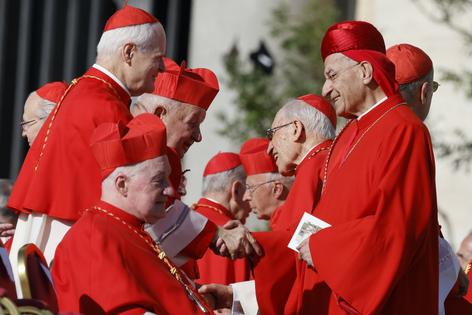
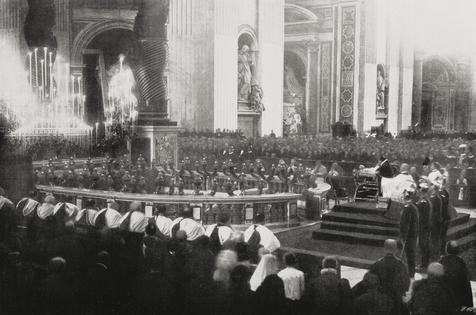
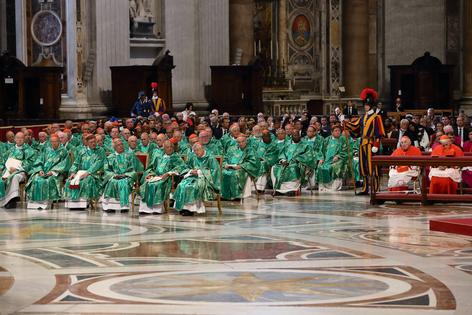





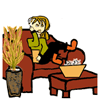
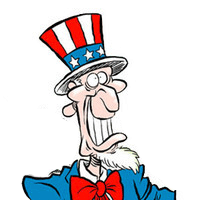


Comments